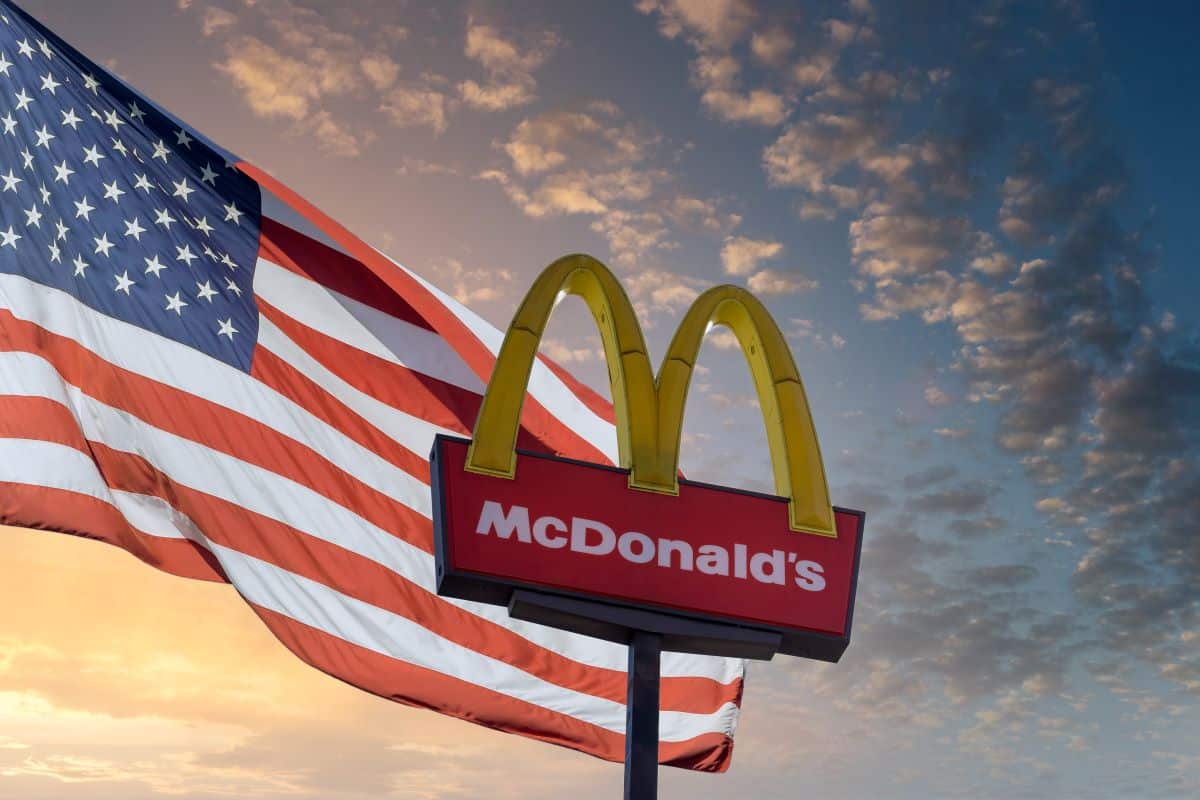Ever noticed how fast food chains suddenly start waving the flag every time a patriotic holiday rolls around? It’s like they’ve discovered a new secret sauce: blend a little red, white, and blue with a lot of marketing, and voilà—sales go through the roof. But here’s the thing: that burger wrapped in the American flag? It’s probably not as wholesome as it looks.
Patriotism Sells!

Fast food giants have mastered the art of tapping into our national pride, serving up burgers and fries with a side of patriotism. They know that when it comes to America, we’re all in, and they’re more than happy to cash in on that. McDonald’s, for example, has run campaigns like their “Proud to Be American” ads, designed to link their brand with American values and holidays like Independence Day.
Is It Really About America?

But let’s be real for a second—are these chains genuinely celebrating the land of the free, or are they just exploiting our love for the country to boost their bottom line? Consider Burger King’s “Stars & Stripes” burger, a limited-time offering designed to capitalize on patriotic holidays. The colors and themes might tug at your heartstrings, but the aim is clear: to make you spend more.
Wrapping Grease in the Flag

From limited-edition “patriotic” menu items to star-spangled ad campaigns, fast food chains are turning national pride into a marketing gimmick. Anheuser-Busch’s rebranding of Budweiser as “America” during the summer of 2016 shows how deeply ingrained this strategy is across industries. Fast food chains are no different, dressing up their products in patriotic colors to make them more appealing, even though the core product remains unchanged.
But Wait, There’s More!

And while they’re busy waving flags, they’re hoping you don’t notice the not-so-patriotic reality behind those sales—like unhealthy food, low wages, and questionable practices. The fast food industry has long been criticized for paying low wages, with reports from organizations like the National Employment Law Project highlighting how these practices contribute to economic inequality—a far cry from the American Dream they sell.
The All-American Burger? Think Again!

Take a closer look at that “All-American” burger. It’s not made with love for the country; it’s made with a love for profit margins. Limited-time offers and special edition meals aren’t about celebrating America; they’re about boosting quarterly earnings by appealing to your sense of national pride.
Red, White, and… Marketing Hype

It’s no accident that these chains roll out their most patriotic campaigns around July 4th, Memorial Day, or Veterans Day. They’re banking on the fact that your national pride will translate into more sales. For example, research in consumer psychology shows that patriotic marketing can significantly influence purchasing behavior, making consumers more likely to buy products perceived as “American” or aligned with national values.
Super-Sized Nationalism

But it doesn’t stop at the menu. Fast food chains also love to play the nationalism card in their commercials. They’ll show you images of happy, diverse families enjoying a meal together, all under the banner of the American flag. It’s all carefully crafted to make you feel good about choosing their brand, as if buying their burger is somehow an act of patriotism.
The Price of Patriotism

What they don’t tell you is the real cost behind those patriotic meals. Fast food is notorious for its impact on public health. According to the Centers for Disease Control and Prevention (CDC), the prevalence of obesity in the United States has been significantly influenced by the availability and marketing of unhealthy food options, including those from fast food chains.
A Side of Guilt

And here’s where the guilt trip comes in. Some chains go as far as to link their products with supporting the troops or honoring veterans. Subway’s “You’ve Got to Love the Troops” campaign, which used military imagery to sell sandwiches, is a prime example of how patriotism is used to drive sales rather than genuinely support the cause.
Serving Up the American Dream?

Fast food chains love to position themselves as part of the American Dream. They’ll tell you stories of founders who started with nothing and built an empire, all to make you feel like you’re part of that success story when you eat there. But in reality, the dream they’re selling is more about corporate success than anything else.
Don’t Be Fooled by the Flag

Next time you see a fast food chain draped in the American flag, take a moment to think about what they’re really selling. It’s not patriotism; it’s a carefully crafted image designed to make you spend more.
Patriotism at a Price

Remember, true patriotism doesn’t come from a drive-thru window. It comes from actions that support and uplift the community, not just the corporate bottom line.
The Real American Values

So before you bite into that “patriotic” burger, ask yourself: are you really celebrating America, or are you just falling for a marketing scheme? The real American values—hard work, fairness, community—can’t be bought with a side of fries.
Time to Rethink Your Order

Maybe it’s time we start holding these fast food chains accountable for the way they exploit our national pride. Because at the end of the day, a burger is just a burger—no matter how much red, white, and blue they wrap around it.
Featured Image Credit: Shutterstock / ungvar.
The images used are for illustrative purposes only and may not represent the actual people or places mentioned in the article.
For transparency, this content was partly developed with AI assistance and carefully curated by an experienced editor to be informative and ensure accuracy.





